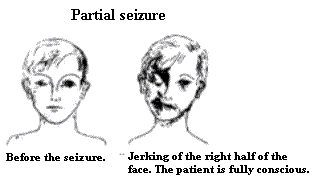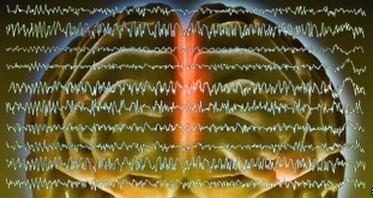What is epilepsy?
Epilepsy is a disorder of the nervous system that can affect people of any age, sex, race, social class or nationality. Epilepsy can be caused by injury to the brain, due to trauma – such as a car accident or a head injury, a high fever caused by an infection, or as they get older some people develop epilepsy due to vascular disease, strokes, tumors and Alzheimer’s disease. Nonetheless, for many people, the cause of their epilepsy is never known.
Epilepsy is diagnosed when there are repeated seizures (sometimes known as fits) during a certain period in a person’s life. If you only have one seizure it is often not epilepsy.
What is seizure?
A seizure is the result of a temporary disturbance to the brain’s electrical activity. This results in the brain’s electrical activity. This results in the brain’s messages becoming temporarily halted or mixed up. The number of seizures can vary from less than one a year to several per day. Seizures can happen at any time. They generally last only a matter of seconds or minutes, after which the brain cells return to normal.
Our brains are responsible for most of our bodily functions, so what someone experiences during a seizure will depend on the part of the brain affected and how widely and rapidly it spreads. For this reason, there are many different types of seizure, and every one will experience epilepsy in a way that is unique to them.
Seizures are classified into two types – generalized and partial seizures.
- Generalized seizures involve most or all of the brain.
- Partial seizures involve a limited part of the brain, and can be either “simple†or “complexâ€.
Simple Partial Seizures
These seizures do not result in the person losing contact with their surroundings (consciousness is not affected). As the brain controls most of the body’s function, if a seizure occurs it usually affects the organ controlled by that part of the brain. So, for example, seizures affecting part of the brain controlling:
- The muscles can cause rhythmic shaking of a part of the body
- The sensory organs such as:
-         Nerves: can cause tingling sensation or pins and needles in the part of the        body which may or may not spread to other parts
-Â Â Â Â Â Â Â Â Â Eyes: may cause the person to see lights, objects, animals or other people.
-Â Â Â Â Â Â Â Â Â Ears: may result in the person hearing sounds, voices or melodies.
-Â Â Â Â Â Â Â Â Â Nose: often difficult to describe but generally disagreeable smells
- The digestive system: may cause feelings of nausea

- The memory or emotions: can cause the sensation of déjà vu (the feeling you have done or been in a situation before), strange thoughts, feelings of fear, wellbeing or anxiety.
- The heart, lungs, glands or temperature may cause rapid heartbeat, altered breathing rates, sweating, fever or chills.
Complex Partial Seizure
People affected by this type of seizure lose consciousness. They can become immobile, with a fixed stare and unable to respond. They often chew or swallow, or move their hands. Someimtes, they may move as if they were conscious (in contact with their surroundings) but will act strangely, not reacting when spoken to or reacting inappropriately.
Generalized Seizures
Tonic Clonic Seizures
 This type of seizure can produce an abrupt loss of consciousness, with the whole body going rigid at the start, i.e. the tonic phase. Then, jerking of the arms and legs, i.e. the clonic phase. The person may bite their tongue, urinate or hurt themselves in the fall or with the jerking movements. Once the seizure is over, they will gradually recover.
This type of seizure can produce an abrupt loss of consciousness, with the whole body going rigid at the start, i.e. the tonic phase. Then, jerking of the arms and legs, i.e. the clonic phase. The person may bite their tongue, urinate or hurt themselves in the fall or with the jerking movements. Once the seizure is over, they will gradually recover.
Absence Seizures
Absence seizures are very short – lasting only a few seconds – but it can happen many times during the day. When a person has this type of seizure they may become still and unresponsive with a fixed stare. They recover immediately and, on many occasions, these types of seizure may go unnoticed, due to their being so short-lived. It begins in childhood or adolescence, and the main inconvenience is the fact that they occur very frequently which can lead to loss of attention and learning problems for the child or adolescent.
Myoclonic Seizures
This causes a sudden jerk of the body or limbs, which may cause the person to drop the things they have in their hands.
Atonic Seizures
There is sudden loss of muscle strength and consciousness in this type of seizure resulting in the person falling to the floor. They recover immediately, however the seriousness comes from the risk of injury from hitting their head or falling to the floor.

